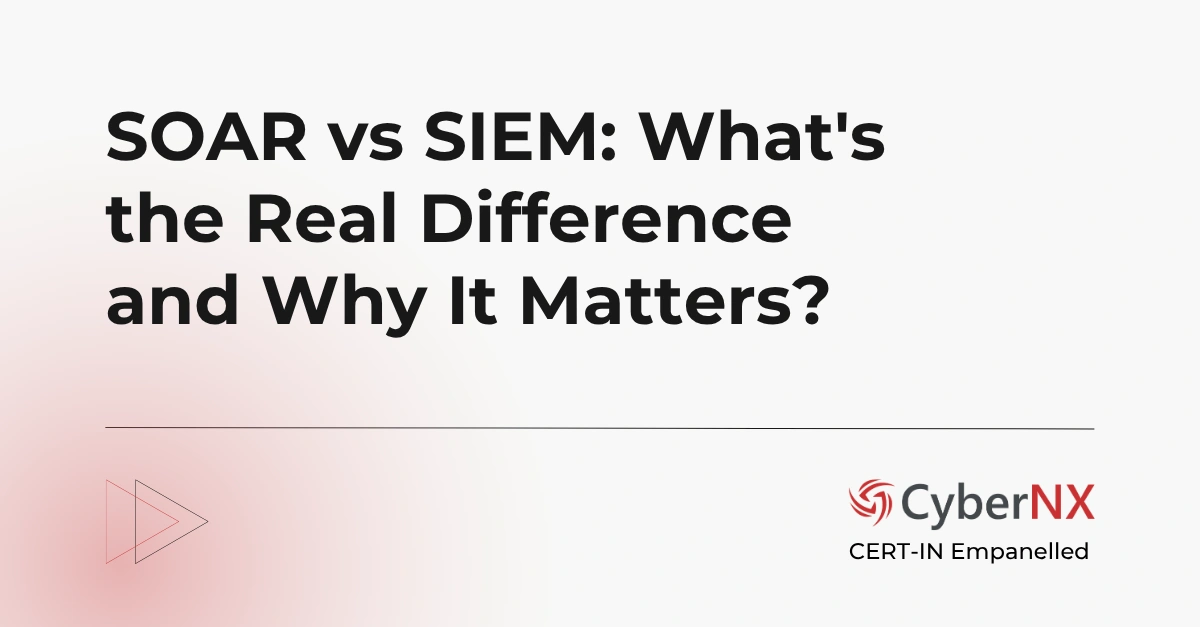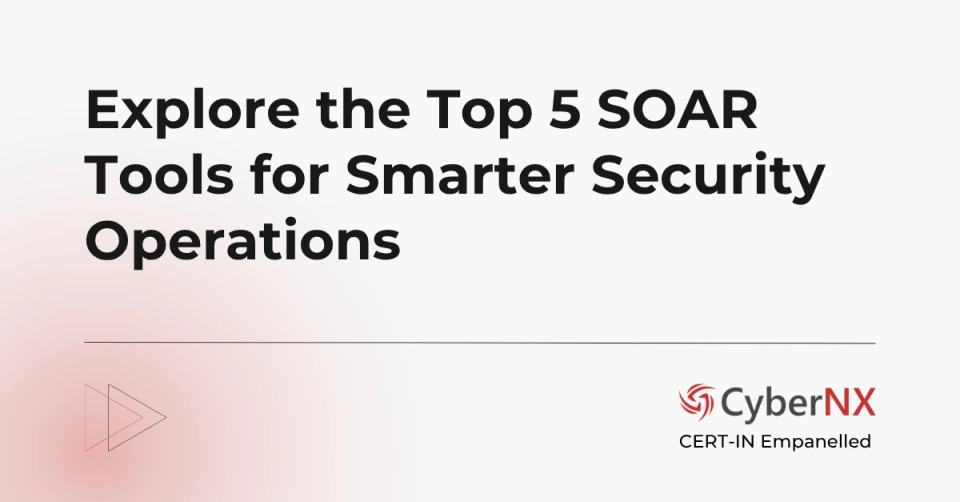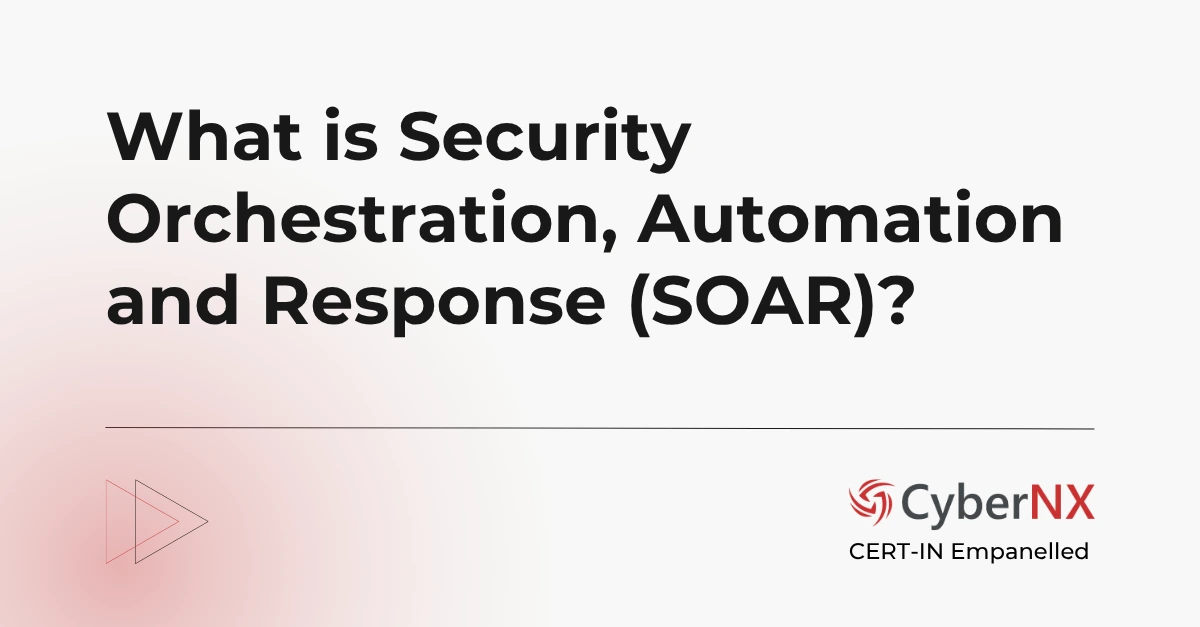For CISOs, CTOs, CEOs and founders, the question isn’t whether to automate security. It is now more about what to automate first. The right Security Orchestration Automation and Response use cases separate tedious manual work from mission-critical detection and containment. This post cuts through vendor hype and shows practical, high-impact SOAR use cases you can pilot quickly to reduce mean time to respond (MTTR), protect high-value assets and free analysts for strategic work.
Why SOAR Matters? The Pain Points It Solves
Security teams face alert fatigue, fractured toolsets and limited staff. That combination leads to slow investigations, inconsistent responses and compliance exposure. Implementing the right SOAR use cases addresses these pain points by stitching tools together, enriching noisy alerts with context and codifying response decisions into repeatable, auditable playbooks. The result: faster containment, fewer human errors, and clear metrics you can report to the board.
Related Content: SOAR Guide
Top SOAR Use Cases (Practical, Revenue-Protecting Workflows)
From phishing to ransomware containment, top SOAR use cases tackle high-frequency, high-impact threats. They give security leaders confidence that critical risks are contained before they escalate into costly breaches.
1. Automated Incident Triage and Enrichment
When the SIEM or EDR fires, playbooks can automatically collect user identity, asset criticality, recent authentication events, and related threat intelligence. That enrichment converts thousands of low-fidelity alerts into a ranked queue. Quick win: shave initial triage time from hours to minutes and reduce false positives presented to senior analysts.
2. Phishing Detection and Response
Reported emails are parsed to extract URLs, attachments, and sender metadata. Playbooks then check reputation, detonate suspicious attachments in a sandbox, and, if malicious, automatically block URLs and quarantine affected mailboxes or endpoints. This workflow reduces phishing dwell time and customer-facing incidents.
3. Vulnerability Prioritization and Patch Orchestration
Instead of a static CVE list, integrate scanner outputs with asset inventory, business-criticality tags, and exploit intelligence to produce prioritized remediation tickets. The orchestration layer can create and assign patch jobs to the right systems, track progress, and escalate stale items – turning a noisy vulnerability backlog into an actionable roadmap.
4. Threat Intelligence Enrichment and Automated Blocking
Feed indicator streams into playbooks that enrich IOCs with context (who owns the asset, whether it’s used in production, historical hits). When confidence thresholds are met, automated actions push blocks to firewalls, proxies, or EDR policies. These Security Orchestration Automation and Response use cases improve blocking accuracy and reduce manual lookup time.
5. Ransomware Containment and Forensic Preservation
A playbook can isolate infected hosts, snapshot volumes for forensic analysis, collect key artifacts (event logs, process trees), and notify legal, PR, and executive stakeholders – while preserving evidence and arresting lateral movement. Automating these steps reduces chaos during the critical early hours of an event.
6. Insider Threat Detection and Response
Combine DLP alerts, abnormal file access patterns, and HR triggers into a single investigation flow. Automated gates can temporarily restrict access or require step-up authentication and create a repeatable documentation trail for compliance and HR workflows.
7. Cloud Security Posture Remediation
Automated cloud playbooks detect misconfigurations (open buckets, exposed credentials, overly permissive roles) and either remediate directly or create prioritized tickets for the cloud team. This reduces attack surface drift and enforces guardrails across multi-cloud estates.
8. Third-party Exposure Containment
When a supplier compromise is announced, playbooks identify shared assets, apply compensating controls (segmented access, MFA enforcement), and orchestrate vendor notifications and contract-driven evidence collection. These operationalized SOAR use cases let teams respond to supply-chain incidents without rewriting playbooks each time.
Implementing SOAR Use Cases
Start with low-risk, high-frequency workflows – phishing reports or alert triage – and instrument everything for measurement. Map inputs and decision points, test playbooks in a safe environment, run them in assist mode (where automation suggests actions, but humans approve), then graduate to full automation for low-risk steps. Prioritize normalization of telemetry and version control for playbooks so responses are reproducible and auditable.
Measuring ROI and Operational Impact
Quantify analyst-hours reclaimed, reductions in dwell time, and compliance benefits. For example, automating triage and enrichment commonly frees 20–40% of junior analyst capacity; automating containment steps reduces lateral movement windows measured in minutes instead of hours. Translate those metrics into cost savings and avoided breach scenarios to make the business case to finance and the board. Many organizations find payback within a single fiscal year for initial pilots.
Challenges and Best Practices
Don’t automate everything at once. Over-automation without human oversight can create service outages or compliance gaps. Implement human-in-the-loop checks for high-impact actions, keep playbooks modular and testable, and tie each automation to a business objective – whether it’s regulatory reporting, MTTR reduction, or analyst retention. Treat playbooks as code: version, peer-review, and validate them regularly. Finally, ensure your SOAR road map aligns with both security and business priorities so Security Orchestration Automation and Response use cases stay relevant and funded.
Conclusion
Well-chosen SOAR use cases are the bridge between tool sprawl and operational maturity. Begin with quick wins – phishing response and automated triage – then expand into vulnerability orchestration, cloud remediation, and supply-chain containment. When scoped and instrumented properly, SOAR use cases allow security teams to scale protection, demonstrate measurable ROI, and deliver the consistent, auditable responses boards and regulators demand. Contact us today for SOAR consulting services and accelerate your incident response capabilities.
Soar Use Cases FAQs
How quickly can an organization realize benefits from SOAR use cases?
Small, well-scoped pilots (phishing or triage) often show measurable benefits in 60–90 days. Tangible ROI depends on alert volume and manual effort being reclaimed, but most teams see meaningful time savings within the first quarter after production deployment.
Which teams should be involved when designing playbooks?
Cross-functional involvement is critical: SOC analysts, incident responders, cloud ops, identity teams, legal/compliance, and a business stakeholder who can define asset criticality. This ensures playbooks are safe, effective, and aligned with risk appetite.
Will SOAR replace security analysts?
No. SOAR is meant to elevate analysts by removing repetitive tasks and freeing them for hunting, tuning detections, and strategic initiatives. The goal is better productivity and retention, not headcount reduction.
How do you maintain and govern playbooks at scale?
Treat playbooks like software: source control, CI testing, peer reviews, and changelogs. Add monitoring and KPI dashboards so teams can see playbook effectiveness and identify when adjustments are needed.





